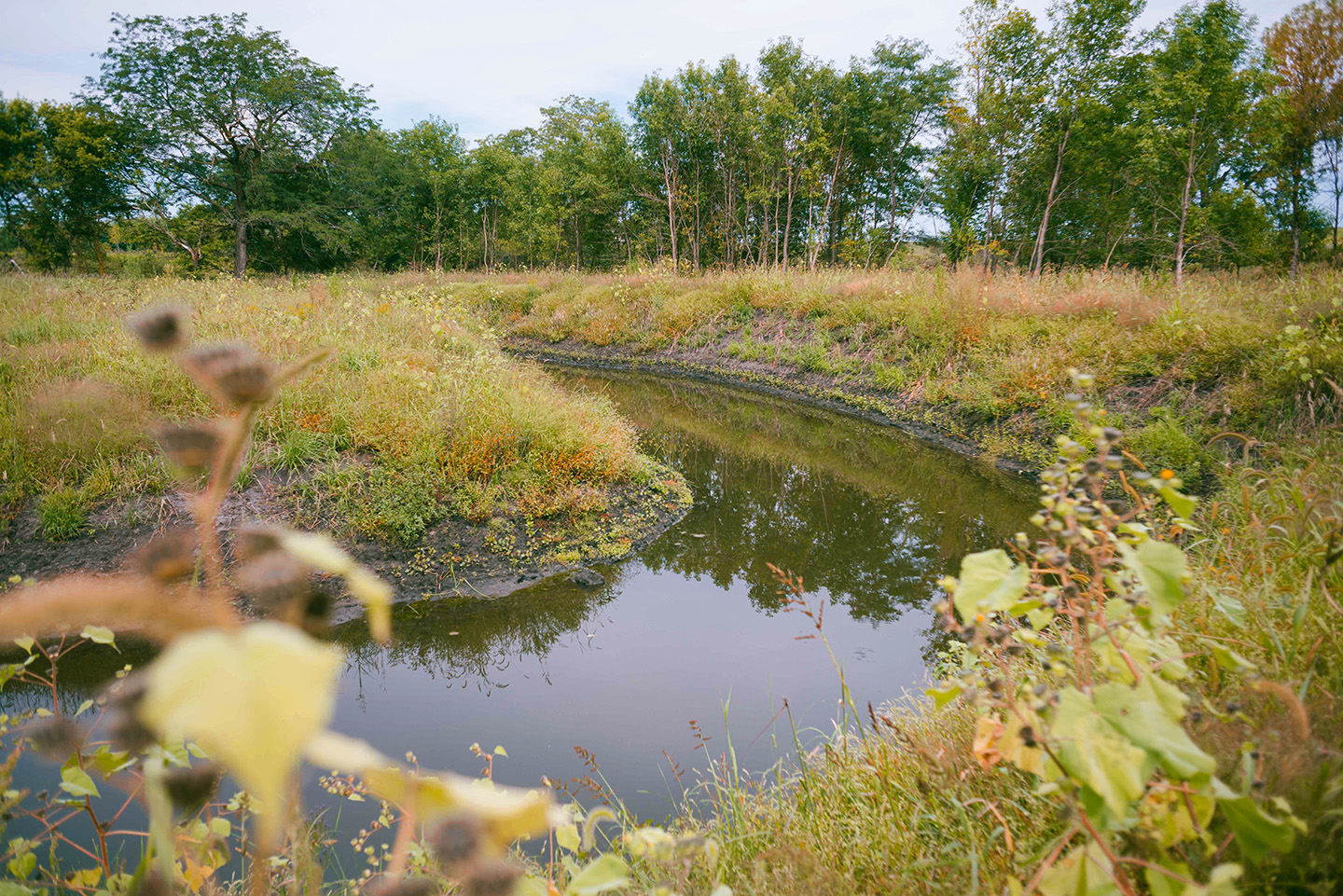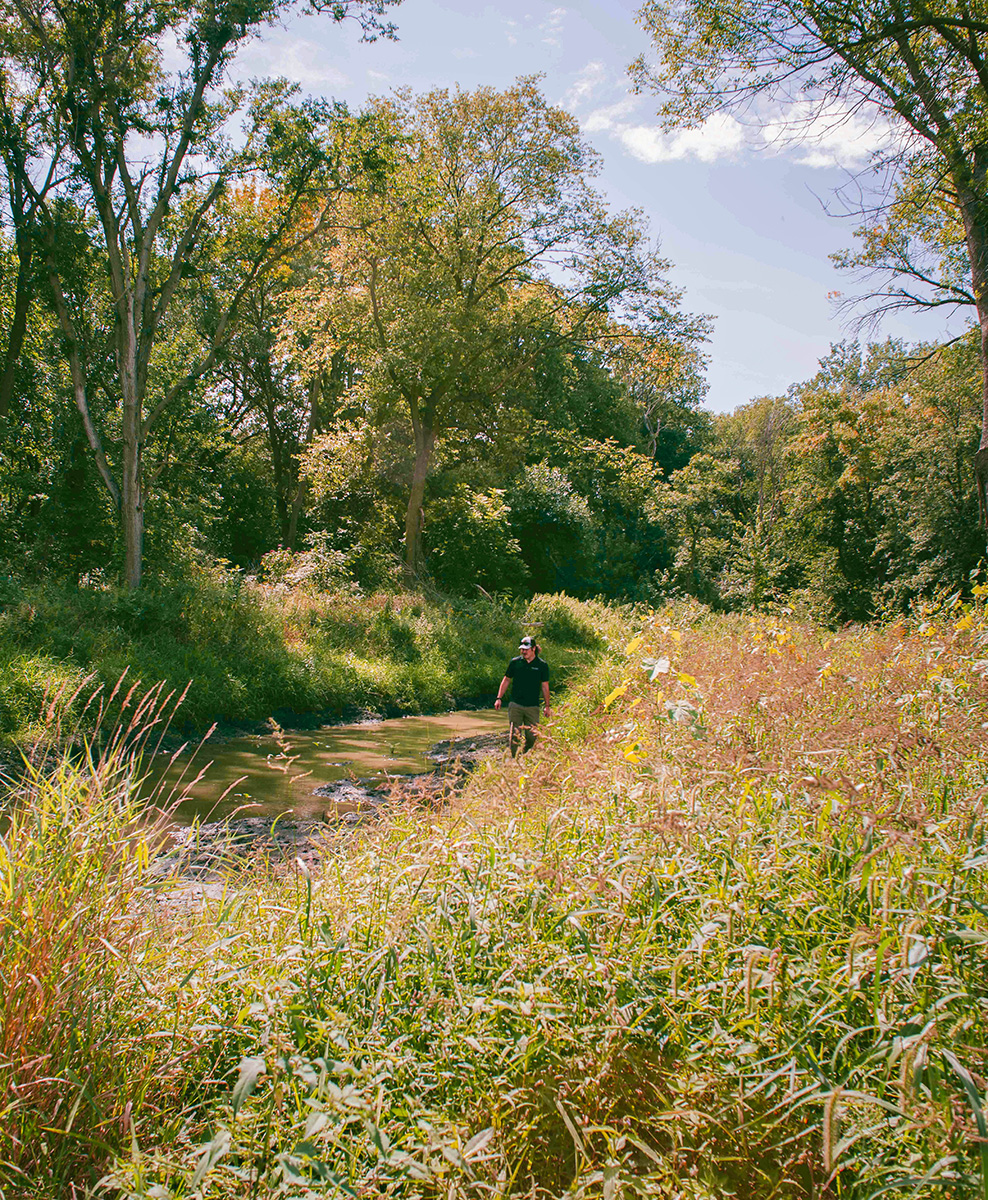
A restored oxbow (Photo credit: Joseph Hopper/Iowa Soybean Association)
The finished product
September 22, 2022
Oxbow work highlighted during recent tour
At the turn of 2022, seven oxbows were being restored in Greene and Carroll Counties through a partnership between ISA and the U.S. Fish and Wildlife Service. Now complete, both organizations hosted a tour of three of the finished oxbows, showing off the finished product to both the conservation minded and the partners who are making these oxbow restorations a reality.
Oxbows — the winding, meandering, disconnected pools — are a common sight across the Iowa landscape. Over time, the calmer waterways become filled with sediment carried in from the mainstream. Restoring oxbows can offer a wide range of benefits, from the ecological such as providing an ecosystem for endangered wildlife; to the preventative, as oxbows can help remove nitrates before heading for a waterway.
Caydee Savinelli, pollinator and integrated pest management stewardship lead for Syngenta, says both the dynamics and results of the multi-organization oxbow partnership were great, explaining not only are the projects helping farmers but helping the environment by creating more habitat for fish and birds.
“I am completely fascinated; looking at the frogs jumping, fish jumping, the insects swimming,” Savinelli says. “When you look at it from a distance you may not see much, but when you look up close you see life. It’s not just one species, it’s multiple species surrounded by water and it also has a lot of benefits for the environment.”

ISA’s oxbow expert and the tour’s host, Brandon Iddings, says the tour was a way to put a bow on the seven-oxbow project. They’ll serve as an example as Iddings hopes to increase the number of oxbows in Iowa restored to serving their important ecological purpose.
“Hopefully we’ll be able to take more people out to that area in the future,” says Iddings, ISA field services program manager for conservation resources. “Four of the seven oxbows were done in cow pasture. That’s one of the main questions we get asked, is how these work in a cow pasture on a working farm instead of scrub ground. They act just like the stream, it’s actually easier for the cows to get into them instead of the stream.”
Those interested in learning more about restoring an oxbow on their property can contact Iddings and check out The Oxbow Restoration Toolkit, which was created through a partnership between ISA, the USFWS, IDALS and The Nature Conservancy.
Back